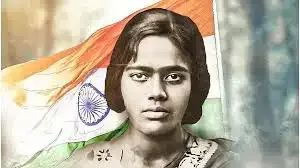Shopping cart
Your cart empty!
Terms of use dolor sit amet consectetur, adipisicing elit. Recusandae provident ullam aperiam quo ad non corrupti sit vel quam repellat ipsa quod sed, repellendus adipisci, ducimus ea modi odio assumenda.
Lorem ipsum dolor sit amet consectetur adipisicing elit. Sequi, cum esse possimus officiis amet ea voluptatibus libero! Dolorum assumenda esse, deserunt ipsum ad iusto! Praesentium error nobis tenetur at, quis nostrum facere excepturi architecto totam.
Lorem ipsum dolor sit amet consectetur adipisicing elit. Inventore, soluta alias eaque modi ipsum sint iusto fugiat vero velit rerum.
Sequi, cum esse possimus officiis amet ea voluptatibus libero! Dolorum assumenda esse, deserunt ipsum ad iusto! Praesentium error nobis tenetur at, quis nostrum facere excepturi architecto totam.
Lorem ipsum dolor sit amet consectetur adipisicing elit. Inventore, soluta alias eaque modi ipsum sint iusto fugiat vero velit rerum.
Dolor sit amet consectetur adipisicing elit. Sequi, cum esse possimus officiis amet ea voluptatibus libero! Dolorum assumenda esse, deserunt ipsum ad iusto! Praesentium error nobis tenetur at, quis nostrum facere excepturi architecto totam.
Lorem ipsum dolor sit amet consectetur adipisicing elit. Inventore, soluta alias eaque modi ipsum sint iusto fugiat vero velit rerum.
Sit amet consectetur adipisicing elit. Sequi, cum esse possimus officiis amet ea voluptatibus libero! Dolorum assumenda esse, deserunt ipsum ad iusto! Praesentium error nobis tenetur at, quis nostrum facere excepturi architecto totam.
Lorem ipsum dolor sit amet consectetur adipisicing elit. Inventore, soluta alias eaque modi ipsum sint iusto fugiat vero velit rerum.
Do you agree to our terms? Sign up

In an era when India’s freedom struggle was still shaped largely by male revolutionaries, a young woman from Chittagong shattered every convention. At just 21, Pritilata Waddedar emerged as one of the first Indian women to lead an armed offensive against British colonial rule—an act of defiance that turned her into a timeless symbol of courage.
Pritilata was not raised as a militant; she was a bright student who became a schoolteacher. But beneath her academic brilliance lay a fierce patriotism shaped by the racial injustice around her. The early 1930s in Bengal were marked by heightened repression, discriminatory policies and open displays of British supremacy. One of the most brazen symbols of that arrogance stood in Pahartali: the European Club, known for its humiliating signboard—“Dogs and Indians Not Allowed.”
On September 23, 1932, Pritilata led a group of revolutionaries to attack this club, transforming her quiet resolve into armed resistance. The objective was not just to strike a building, but to strike at the racial hierarchy the British enforced. The operation, planned under the guidance of revolutionary leader Surya Sen—popularly remembered as Masterda—was a bold attempt to break the colonial narrative that Indian women were passive participants in political movements.
During the attack, Pritilata was injured. But she made a choice that cemented her name into history. To avoid capture—knowing the torture she would face and the secrets she might be forced to reveal—she consumed cyanide. At an age when most young women were expected to follow domestic norms, Pritilata embraced martyrdom with resolve and became a beacon of resistance.
Her involvement with Surya Sen’s movement placed her among the extraordinary revolutionaries connected to the Chittagong Armoury Raid, one of the most daring uprisings against the British in the 1930s. While many of her male contemporaries received wider recognition, Pritilata’s contribution remains equally significant. Historians have documented her role extensively in works like “Do and Die: The Chittagong Uprising 1930–34” and “Indian Women Freedom Fighters 1857–1947.”
Her name often slips out of mainstream conversations, overshadowed by larger political narratives. Yet, her sacrifice offers a vital reminder that the freedom struggle was not solely a battlefield of men. It was strengthened by women who refused to accept oppression and who carried the weight of rebellion with unmatched conviction.
Pritilata Waddedar’s life continues to inspire young Indians, especially women, to challenge injustice with courage. Her story endures as a powerful reflection of resistance—and a testament to the truth that bravery has no age and no gender.
30
Published: Nov 15, 2025